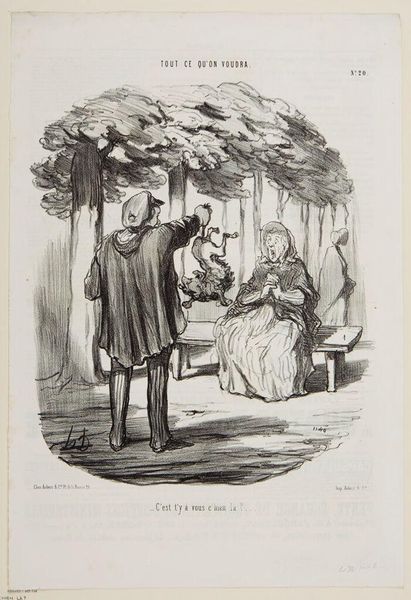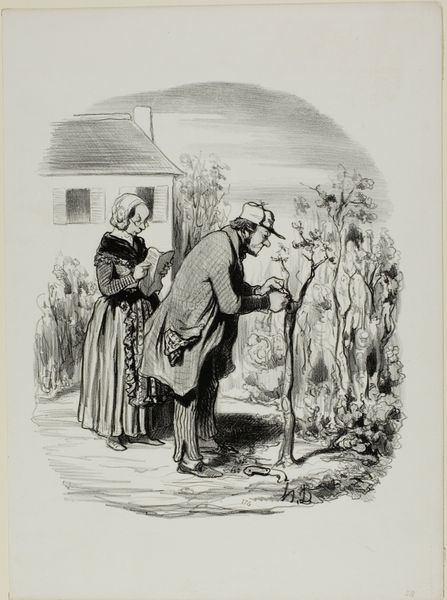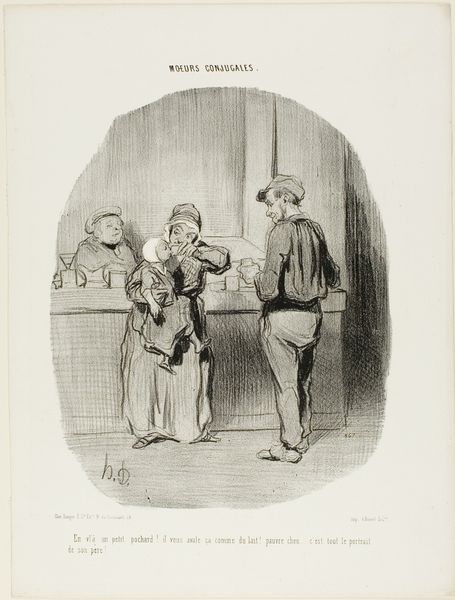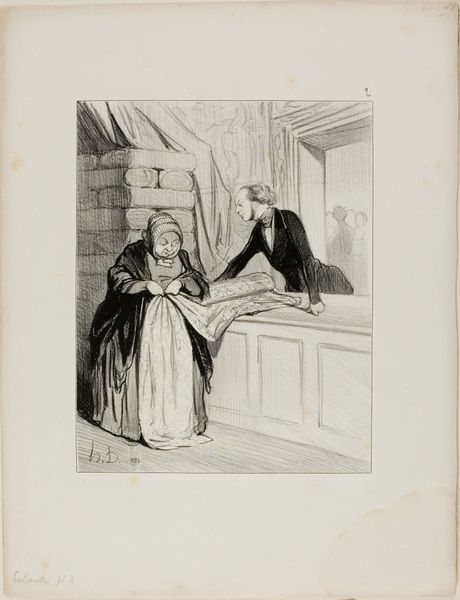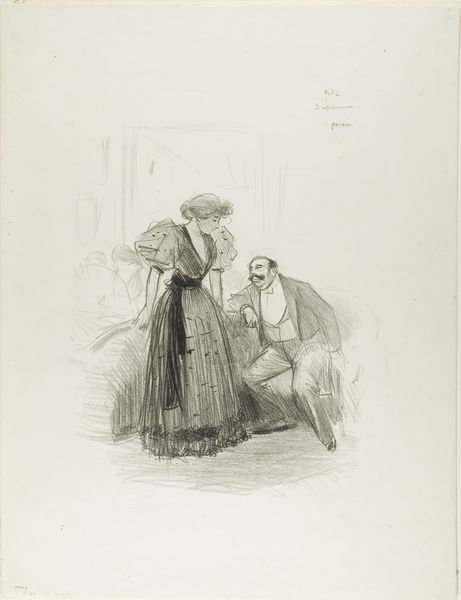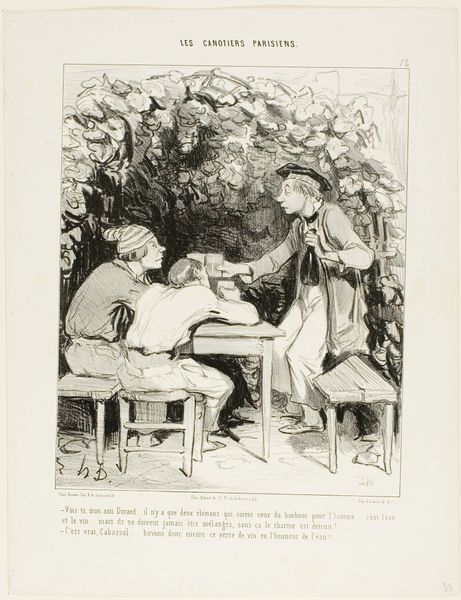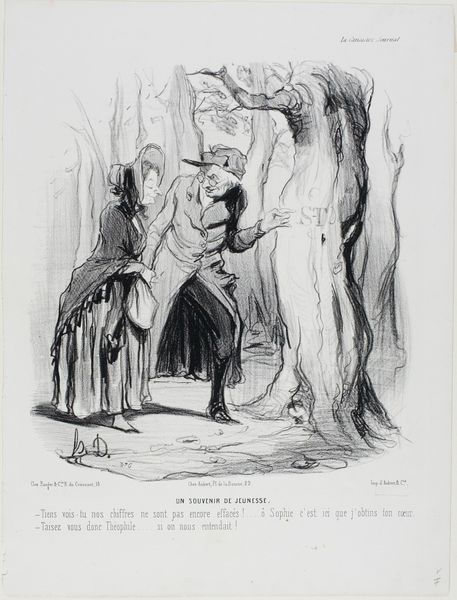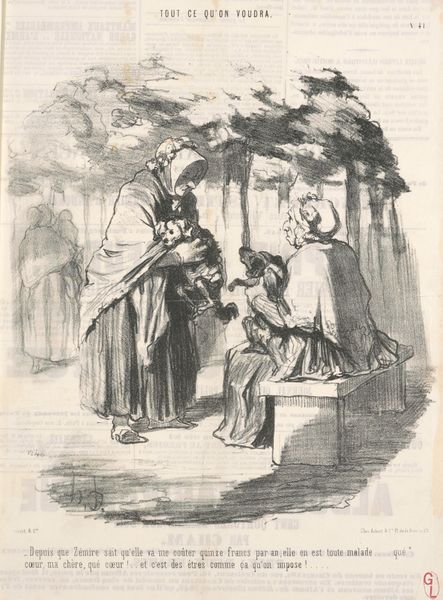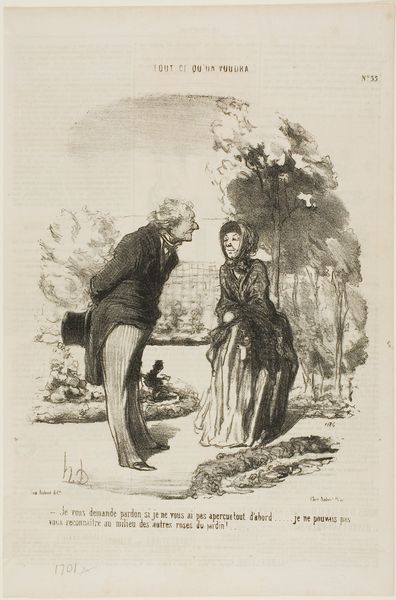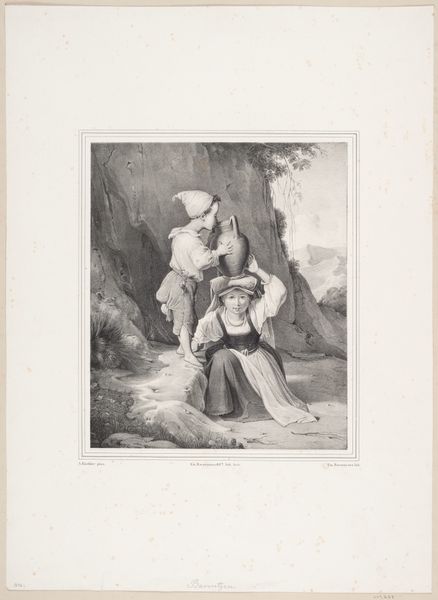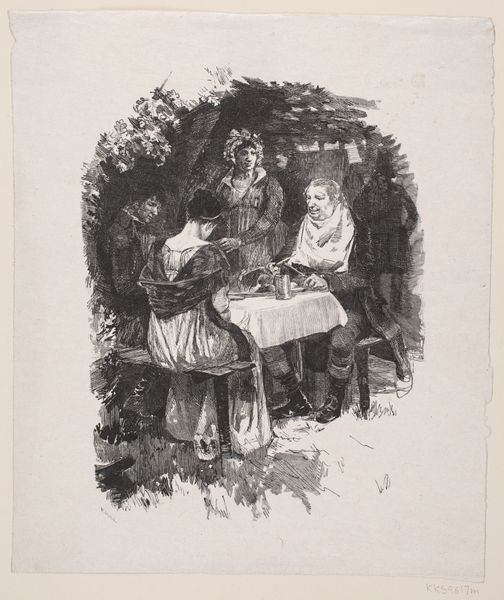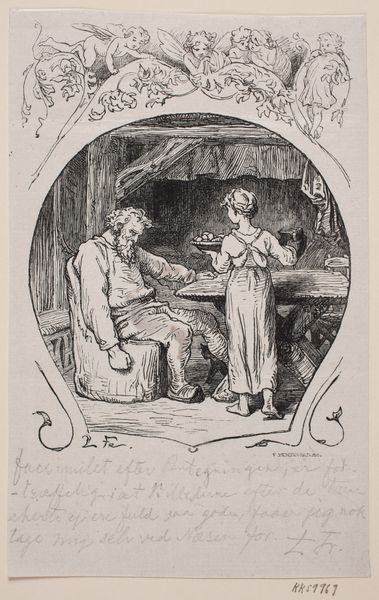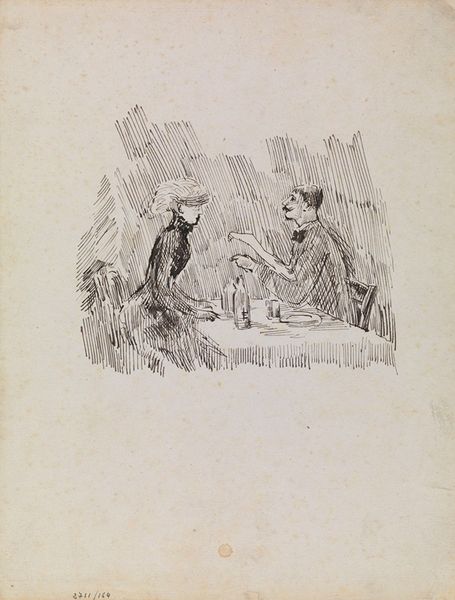
"Is this your dog here?," plate 20 from Tout Ce Qu'on Voudra 4 - 1847
0:00
0:00
drawing, lithograph, print, paper
#
drawing
#
lithograph
# print
#
french
#
caricature
#
paper
#
romanticism
#
france
#
genre-painting
Dimensions: 267 × 228 mm (image); 360 × 278 mm (sheet)
Copyright: Public Domain
Curator: Here we have a lithograph by Honoré Daumier, titled "'Is this your dog here?', plate 20 from Tout Ce Qu'on Voudra," created in April 1847. It depicts a rather unsettling scene in what appears to be a public park. Editor: Unsettling is the right word! The stark contrast between the almost comical presentation of the… dog and the woman’s genuine horror is immediately striking. I find the piece deeply unsettling. It provokes a gut reaction. Curator: Daumier was a master of social commentary, often using caricature to critique the bourgeoisie of 19th-century France. This particular piece, part of a larger series, speaks to the anxieties and social absurdities prevalent during that time. Editor: Exactly, and it does so through the lens of gender and class. The woman's exaggerated reaction underscores the societal expectations placed upon women of a certain class—fragility, refinement—contrasted against what, is assumed to be, the working-class man presenting what may be a stolen or simply lost, and certainly deceased, animal. The question isn't merely about property, is it? Curator: No, I think you're spot-on. The image is loaded with potential narratives about power, ownership, and the often-humorous miscommunications between different strata of society. The setting, a public park, is itself a stage for these interactions. We often expect leisure in these public spaces, but the piece throws expectations off by showing us a harsh, arguably tragic reality that one segment of the population is blind to, yet another must face. Editor: And look at the way Daumier renders the dog—almost grotesque, dangling limply. It amplifies the emotional discomfort. The composition—with the implied line between the man and woman, with the park space acting as backdrop—keeps us focused on the relational dynamics and class commentary rather than getting mired in grief over a poor pup. It really captures that feeling of disconnect that defined so much of 19th century urban life. Curator: Indeed, a powerful snapshot of a society grappling with its own internal contradictions. It’s amazing how a simple drawing on paper can be so incisive and thought-provoking, don't you think? Editor: Absolutely, and it highlights the ongoing relevance of considering intersectional historical narratives for understanding the art and times, both past and present. It's a strong call to dialogue.
Comments
No comments
Be the first to comment and join the conversation on the ultimate creative platform.
